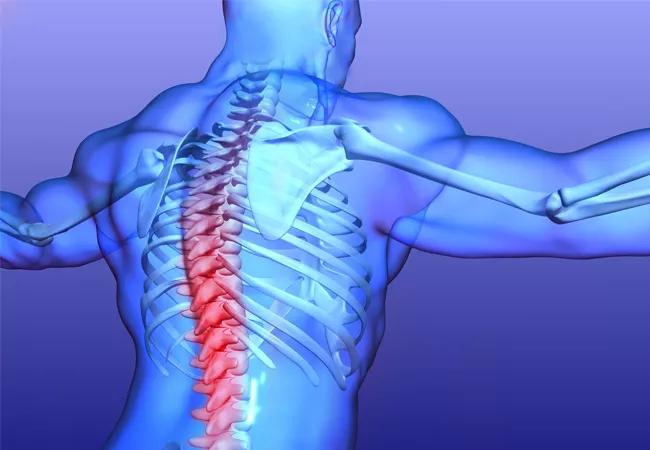Arachnoiditis can be caused by spinal surgery

Arachnoiditis is a rare condition that can be overlooked. Its causes differ today from decades past, and new modalities are offering more optimistic prospects for pain relief.
Cleveland Clinic is a non-profit academic medical center. Advertising on our site helps support our mission. We do not endorse non-Cleveland Clinic products or services. Policy
Characterized by severe stinging or burning pain, arachnoiditis is an inflammation of the arachnoid tissue of the spinal cord with subsequent scar tissue formation. In the years prior to widespread use of magnetic resonance imaging, intrathecal injection of contrast material for CT myelography was the primary cause. Intrathecal steroid injections also sometimes caused arachnoiditis, but the use of intrathecal steroid has been supplanted by other means to address pain diagnoses.
Today, arachnoiditis is seen most often following spinal surgery, and occasionally following bacterial or viral meningitis. “You won’t encounter it every day in your practice, but it’s also not a zebra. It’s probably a bit more common than is recognized,” says Cleveland Clinic pain specialist Robert B. Bolash, MD.
Sometimes the condition can be dismissed because the vivid “electrical” sensations described by patients do not follow the path of any nerve. “But it is definitely a real condition and a challenging one,” Dr. Bolash says.
A 1990 review article about arachnoiditis in the Journal of the Royal Society of Medicine concluded: “The relentless and progressive pain syndrome…is taxing to the patient’s morale. In many instances, doctors, relatives, and friends fail to realize that the pain can be as bad as terminal cancer, without the prospect of death to end the suffering.”
The picture is far less bleak today. Two different modalities, spinal cord stimulation (SCS) and intrathecal infusion of the N-type calcium channel blocker ziconotide, can provide significant opioid-sparing pain relief to patients with arachnoiditis, along with chronic pain of other etiologies.
Cleveland Clinic was recently involved in a multicenter, prospective, randomized clinical trial comparing 6 months of treatment with spinal cord stimulation in patients with chronic refractory pain following back surgery. A proportion of subjects found marked improvement in pain which permitted them to resume activities they’d since abandoned due to intractable pain.
“In last 5 years or so, implanted spinal cord stimulators have come a long way in terms of their effectiveness, with a number of innovations in the type of energy we deliver, the frequencies and waveforms. They’re definitely a big advance, and something I think we’ll see improve further,” Dr. Bolash says.
The other approach to pain relief in arachnoiditis involves intrathecal infusion of ziconotide, which is derived from the paralyzing venom of a marine snail and can only be given into the cerebrospinal fluid. “Pain pumps are no longer just for end-of-life chronic pain, but have permitted a number of patients to eliminate oral medications and their side effects” he notes.
These new approaches to arachnoiditis are allowing people to have functional improvement. “We don’t have perfect options or cures, but for those people who have been living in distress, we have something,” Dr. Bolash says. “And these options help us to avoid long-term opioid prescriptions that can lead to side effects such as addiction.”

Two-hour training helps patients expand skills that return a sense of control

More pain education urgently needed, leading specialist says

Helping patients help themselves

A collaboration of physicians from different specialties

Central sensitization is one explanation

Expert offers strategy for success in an evolving environment

Program enhances cooperation between traditional and non-pharmacologic care

National Institutes of Health grant supports Cleveland Clinic study of first mechanism-guided therapy for CRPS